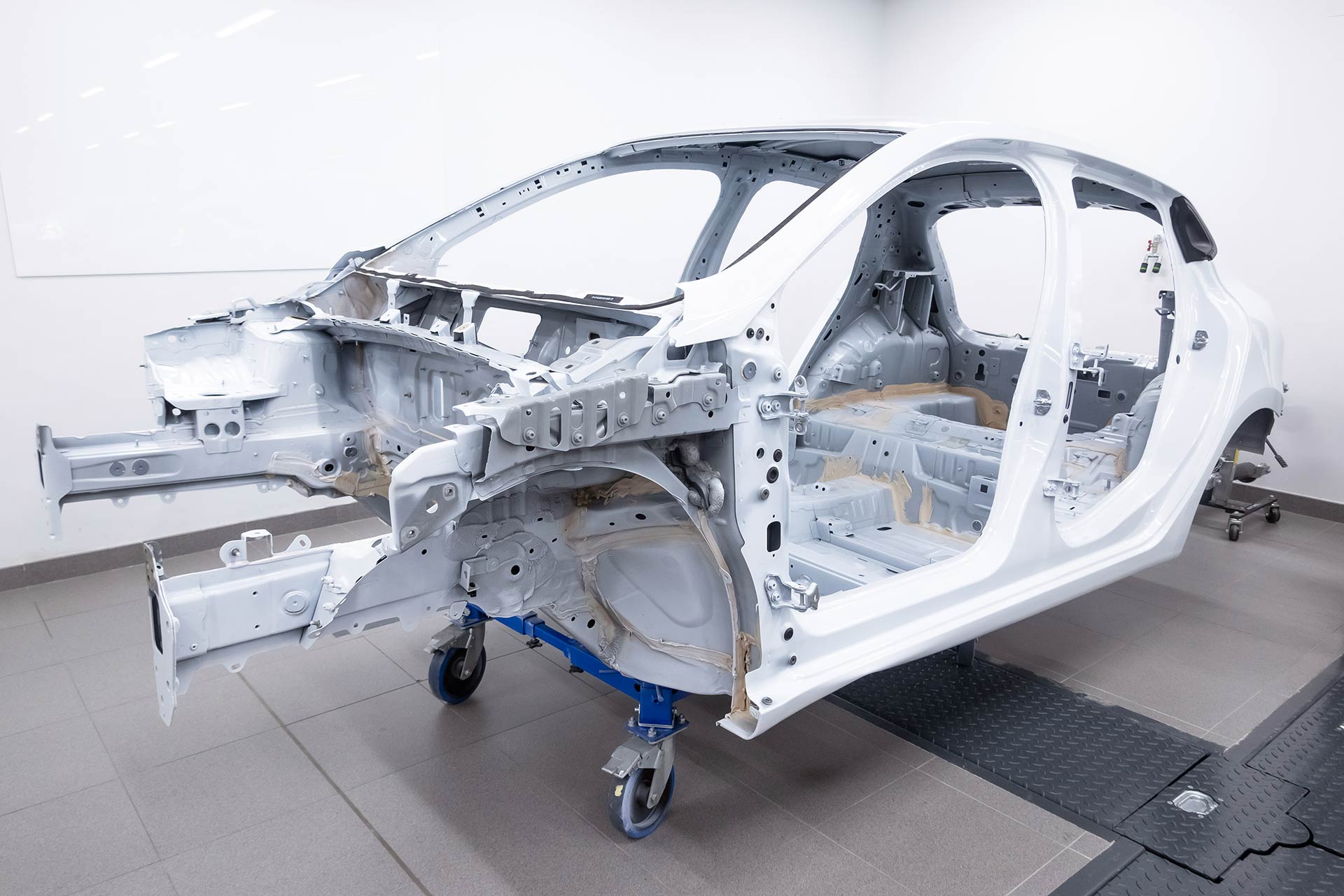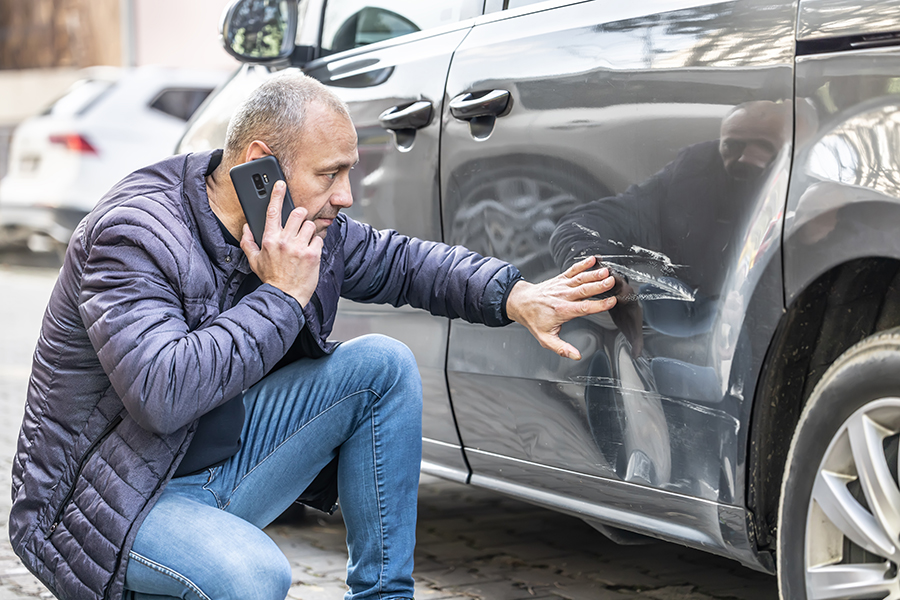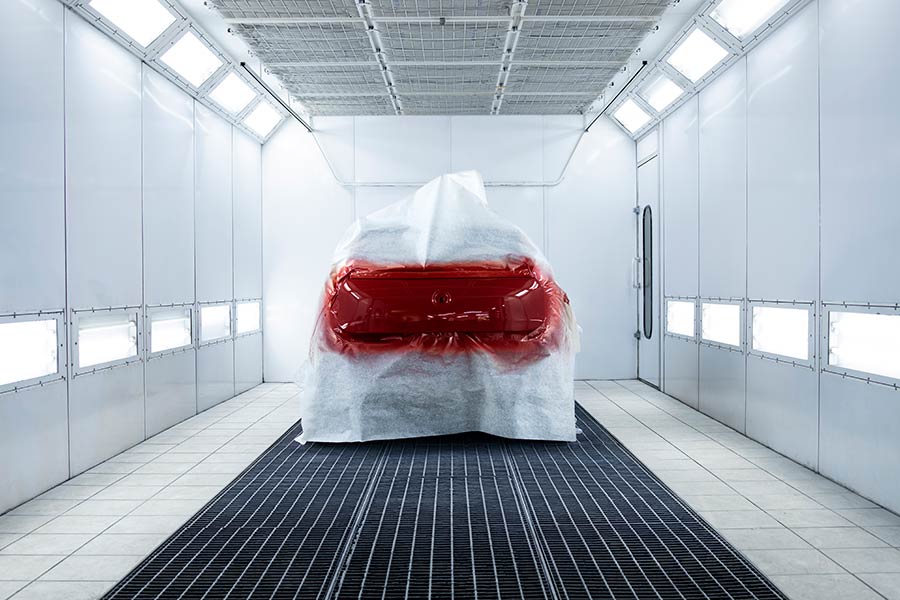Over 50% of car accidents result in some form of car frame damage, highlighting its commonality yet underestimation in vehicle safety and repair discussions. Understanding the nuances of car frame damage is crucial for any car owner, not just for maintaining the aesthetic appeal but also for ensuring the vehicle's structural integrity and safety on the road. This post dives deep into what every driver needs to know about car frame damage, from identifying it to understanding its impact on your ride's performance and value. Stay tuned as we unpack everything you need to keep your vehicle safe and sound.
Key Takeaways
- Car frame damage can affect your car's safety and value, so it's crucial to understand what it is and how it can impact your vehicle.
- Fixing the frame is not just about the car's appearance; it's essential for the car's structural integrity and overall safety on the road.
- There are different types of frame damage, each requiring a specific approach for repair. Knowing these can help you discuss repair options more knowledgeably.
- The repair process can be complex and requires professional assessment to ensure it's done correctly. Attempting DIY fixes without the right skills can worsen the damage.
- Choosing the right repair service is critical. Look for certified technicians with experience in frame repairs to ensure high-quality work.
- Regular inspections can help spot early signs of frame damage, potentially saving you time and money on more extensive repairs later on.
Understanding Car Frame Damage
Identifying Damage
To spot car frame damage, look for visible signs. These include bending or misalignment. Uneven tire wear also hints at this issue. It suggests the frame isn't holding things as it should. Gaps between body panels are another clue. They show the frame may have shifted.
Common Causes
Collisions are a big cause of frame damage. This is true even for low-speed bumps. Hitting potholes or curbs can hurt the frame too. Over time, rust from water or salt can weaken the frame. This makes it less sturdy.
Signs and Symptoms
If steering feels off or the car pulls to one side, suspect frame damage. Unusual noises from the vehicle's body are warning signs too. Doors and windows that don't close right can indicate a damaged frame.
Importance of Structural Repairs
Vehicle Safety
A car's frame is like its skeleton. Damage to this structure can weaken the whole vehicle. This makes the car less safe if another accident happens. The frame's strength is crucial for protecting passengers.
Repairing frame damage is also key to keeping safety features working right. For example, airbags need to deploy at the correct time during a crash. A damaged frame can mess up this timing, putting everyone inside at risk.
Alignment Issues
When a car's frame is damaged, it often leads to problems with how the wheels are aligned. This can cause uneven tire wear and make steering difficult. You might notice your car pulling to one side.
Fixing these alignment issues is important. It helps prevent more damage and keeps you safe on the road. Ignoring them can lead to bigger, costly problems later.
Resale Value
Cars with unrepaired frame damage lose value fast. Most buyers don't want a car that's been in a serious accident. They worry about safety and hidden costs.
To keep your car's value, get any frame damage fixed by professionals. Make sure you have documentation of the repairs. This proves to future buyers that the work was done right.
Types of Frame Damage
Unibody Repair
Unibody repair involves straightening and welding. This process is crucial for vehicles with a unibody structure. It restores the car's shape and strength. Mechanics use special machines to pull the frame back to its original form. They then weld any broken parts.
Unibody repair is often preferred for modern cars. Most of them have a unibody design. This method is less invasive and can be more cost-effective than full frame repair. However, it requires specialized equipment and skills. Not all shops can do this work properly.
Full Frame Repair
Full frame repair deals with severe structural damage. Mechanics may replace or repair sections of a vehicle's frame here. This method is vital for cars with a traditional frame or heavy damage.
The use of frame machines ensures accuracy in repairs. These machines can align the frame correctly, which is essential for the car's safety and performance. Full frame repair is more complex than unibody repair. It often involves more extensive work on the vehicle.
Repair Process Overview
Inspection Techniques
Repair shops use computerized measuring systems to assess car frame damage accurately. These systems compare the car's current frame condition to the original manufacturer specifications. This ensures a precise evaluation.
Visual inspections also play a key role. Technicians look for less obvious signs of damage that machines might miss. They check for cracks, rust, and misalignments.
A thorough inspection is crucial. It guarantees that all damage, visible or not, gets identified. This step ensures repairs are comprehensive.
Repair Methods
Technicians often turn to traditional welding to fix frames. Welding can effectively restore the frame's strength and shape.
However, modern problems require modern solutions. Laser straightening offers unmatched precision in aligning damaged frames. It uses lasers to heat and reshape metal without compromising its integrity.
The choice between these methods depends on the damage's extent and location. Some situations call for the brute force of welding, while others benefit from the finesse of laser technology.
Quality Assurance
After repairs, a post-repair inspection is essential for safety and performance. This step checks if the frame meets safety standards.
Quality control maintains high repair standards. It involves regular checks during the repair process.
Reputable shops offer certifications and guarantees for their work. These assurances speak volumes about their commitment to quality.
Choosing a Repair Service
Expertise and Certification
Selecting a repair service with trained and certified technicians is crucial. These professionals have the knowledge needed for complex frame repairs. Industry-recognized certifications, like those from ASE (Automotive Service Excellence), assure you of their competence.
Certifications are not just papers; they reflect a technician's commitment to excellence. They ensure that the person working on your car has passed rigorous tests. This expertise directly impacts the quality and safety of the repair, making your vehicle roadworthy again.
Tools and Technology
Modern frame repair relies on advanced tools and technology. For example, 3D measuring systems allow technicians to assess damage accurately. This precision is vital for restoring your vehicle to its original factory specifications.
Using high-tech equipment leads to more efficient repairs. It ensures that every part of the frame aligns perfectly, maintaining the car's structural integrity. Such technology also speeds up the repair process, getting you back on the road sooner.
Customer Reviews
Before choosing a repair shop, reading customer reviews is important. They offer insights into the quality of work and customer service. Positive testimonials can indicate a shop's reliability and expertise.
Reviews often highlight how well a shop communicates with its customers. They may also reveal how effectively a shop handles unexpected issues. This feedback is invaluable in selecting a service that will treat both you and your vehicle with care.
Final Remarks
Car frame damage is a big deal. It's not just about looks; it's about your car's safety and performance. You've seen the types, understood the importance of fixing them right, and learned how to pick the best repair service. Now, it's on you to take action. Don't wait around. Driving a car with frame damage is risky business. It compromises your ride's integrity and, more importantly, your safety. Make the smart choice—get it checked, get it fixed. Your car’s frame is its backbone. Treat it with care.
Choosing a repair service isn't just about who's closest or cheapest. It's about quality, trust, and expertise. You want someone who knows their stuff, gives straight answers, and puts your safety first. So, do your homework. Find a shop that stands behind their work with solid guarantees and clear communication. Your car deserves no less. Remember, taking care of your car’s frame damage today means a safer, smoother ride tomorrow.
Frequently Asked Questions
What is car frame damage?
Car frame damage occurs when the structural integrity of a vehicle's frame is compromised due to collisions or impacts, affecting its strength and shape.
Why is fixing structural repairs important?
Structural repairs are crucial for maintaining the safety, performance, and longevity of your vehicle. Ignoring them can lead to unsafe driving conditions and decreased vehicle value.
What are the common types of frame damage?
Common types include bends, cracks, and twists in the frame. Each type affects the vehicle's performance differently and requires specific repair techniques.
Can you overview the repair process for frame damage?
The repair process typically involves assessment, disassembly, straightening or replacing damaged components, welding, and refinishing to restore the vehicle's structural integrity.
How do I choose a reputable car frame repair service?
Look for certified technicians with experience in frame repairs. Check reviews, ask for referrals, and ensure they offer a warranty on their work to choose a reputable service confidently.
Is it possible to fully restore a car's frame to its original condition after damage?
Yes, with advanced repair techniques and skilled technicians, it's often possible to restore a car's frame closely to its original condition, ensuring safety and functionality.
















